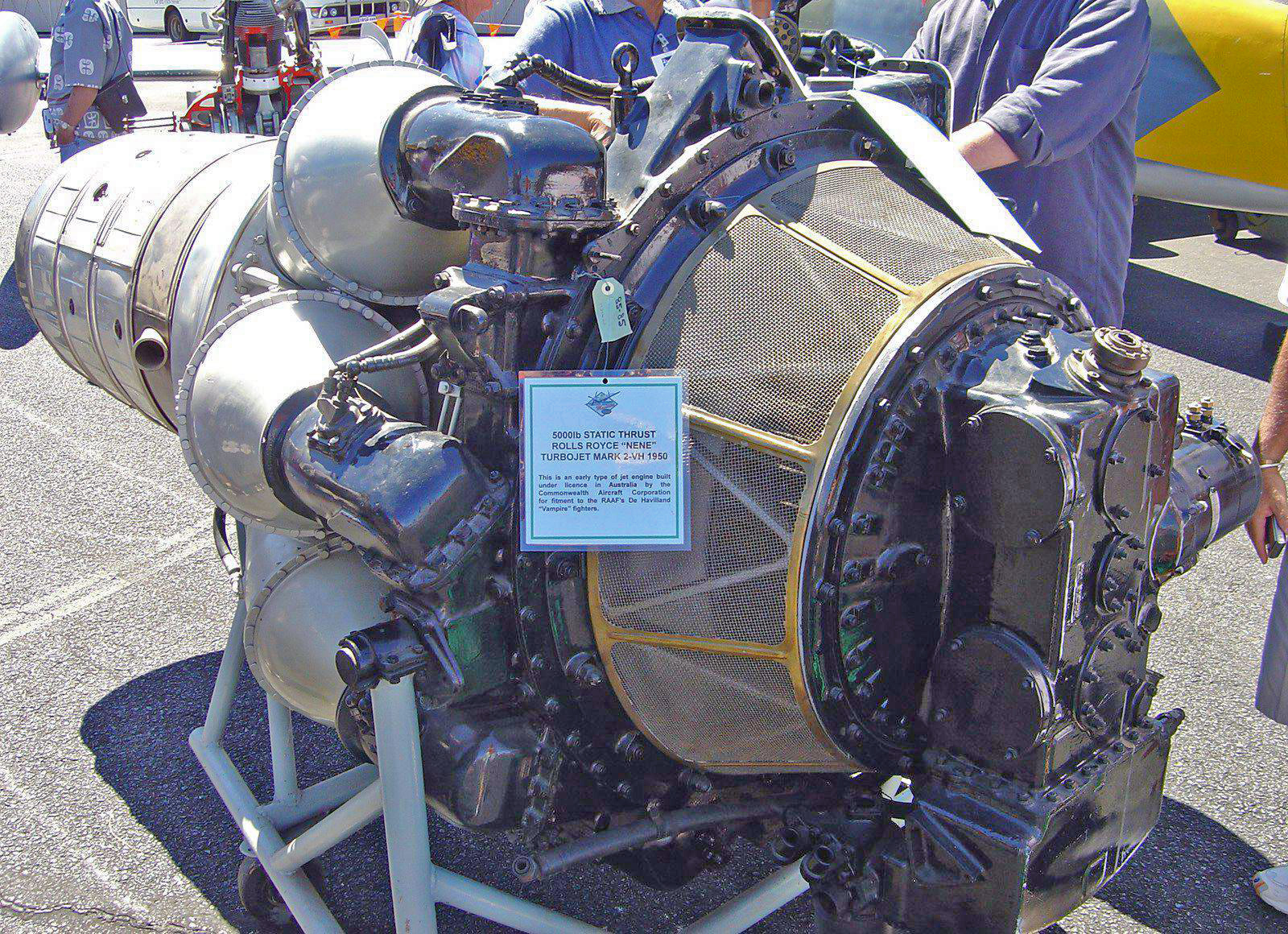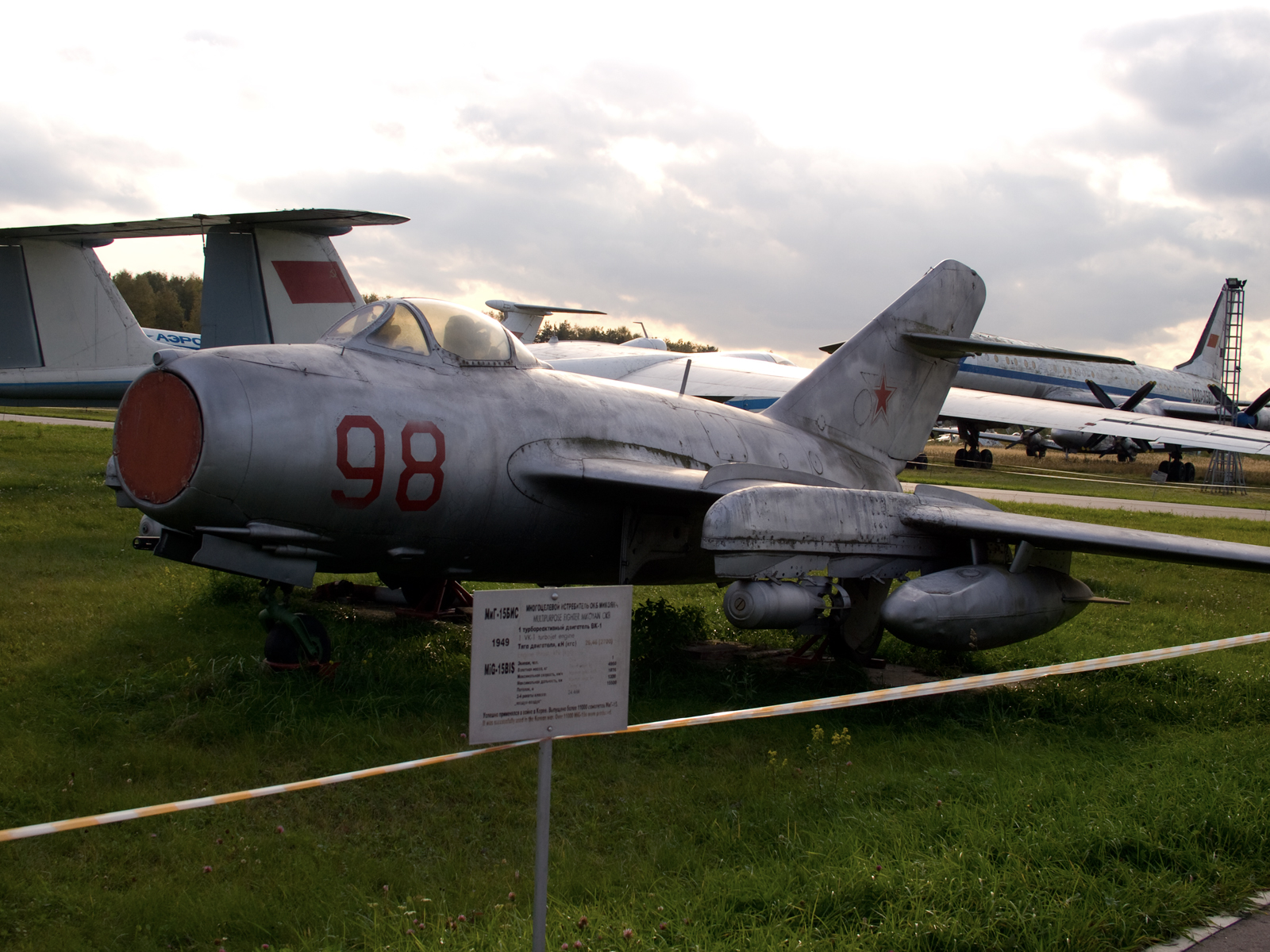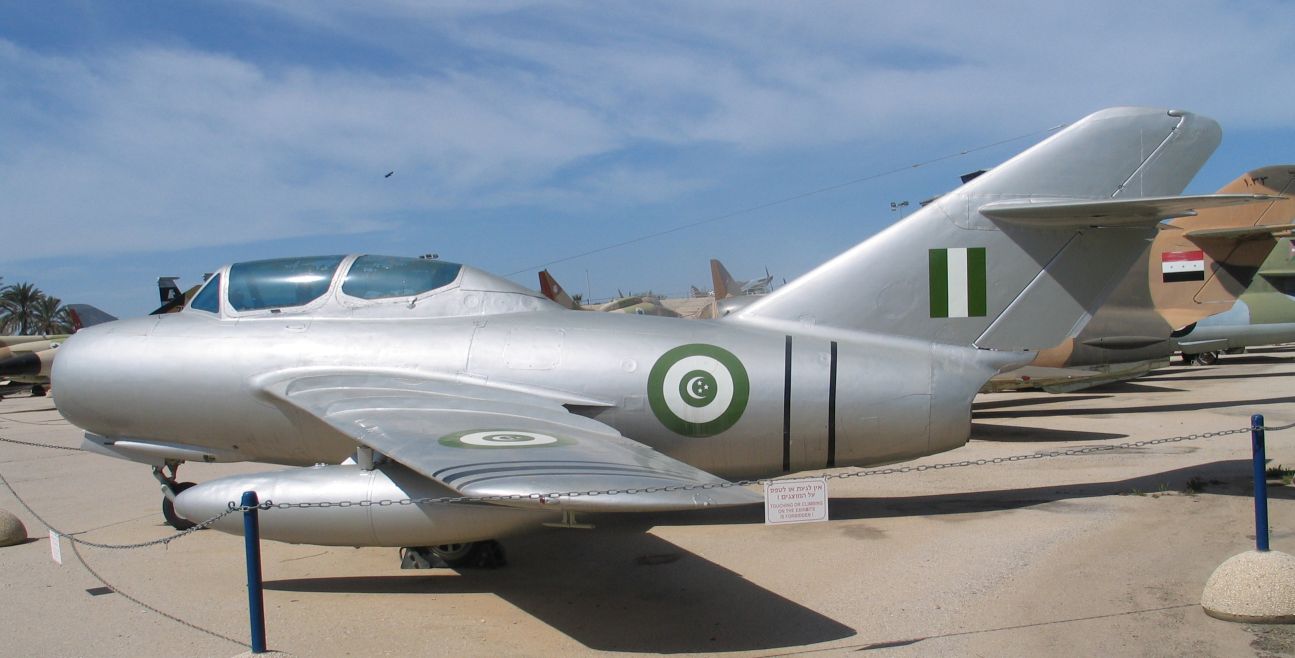History of MiG Aircraft (Part 3) – MiG-15, The most widely produced jet
In the previous post, we saw how the MiG-9 was not so successful just like its predecessor the MiG-3. It was certainly not a very successful entry for the Soviet Union to the jet age. It was plagued with problems related to engines and control. But, it served as a test bed for many technologies that were later embedded to newer aircraft such as the MiG-15.
Not so long after the MiG-9 was introduced to service, the design of the MiG-15 began. The target was to produce a jet aircraft capable of flying faster and higher than the MiG-9. Two challenges appeared to the MiG OKB to achieve this target. The first one was the design of the aircraft. Early jet aircraft used the same design as piston engine aircraft with the only difference being in the type of engine and strengthen of certain parts of the aircraft. Most aircraft adopted a straight wing design which performed poorly at transonic speeds. The second challenge was the engines. New more powerful engines had to be developed or obtained to achieve the speeds required. Those engines also had to be reliable.
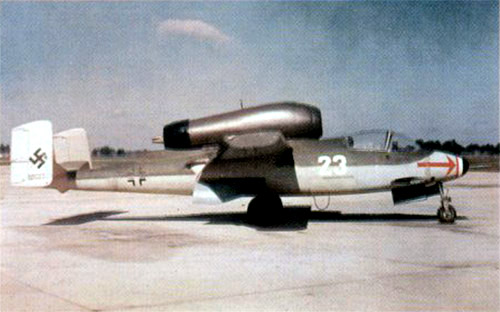 An early first generation jet fighter, Heinkel He 162
An early first generation jet fighter, Heinkel He 162
 An early jet fighter, the British Gloster Meteor
An early jet fighter, the British Gloster Meteor
 An early American jet fighter, Bell P-59 Airacomet
An early American jet fighter, Bell P-59 Airacomet
The solution of the first challenge was to adopt a swept wing design instead of the older straight wing design. The Germans were the first to apply this design on their jet aircraft. In fact, Germany’s first jet fighter, the Me-262, had a swept wing design. But the Germans did not know at the time that this design made aircraft achieve better performance at transonic speed. The design was mainly applied to adjust the center of gravity of the heavy jet engines. Further experience and research during World War II later established that swept wings would give better performance at transonic speeds. At the end of World War II, the Soviets seized most of Germany's aircraft industry. The MiG team studied many of these plans, prototypes and documents, particular swept-wing research and designs. The swept wing later provided a decisive performance advantage over straight-winged jet fighters when it was introduced into combat over Korea.
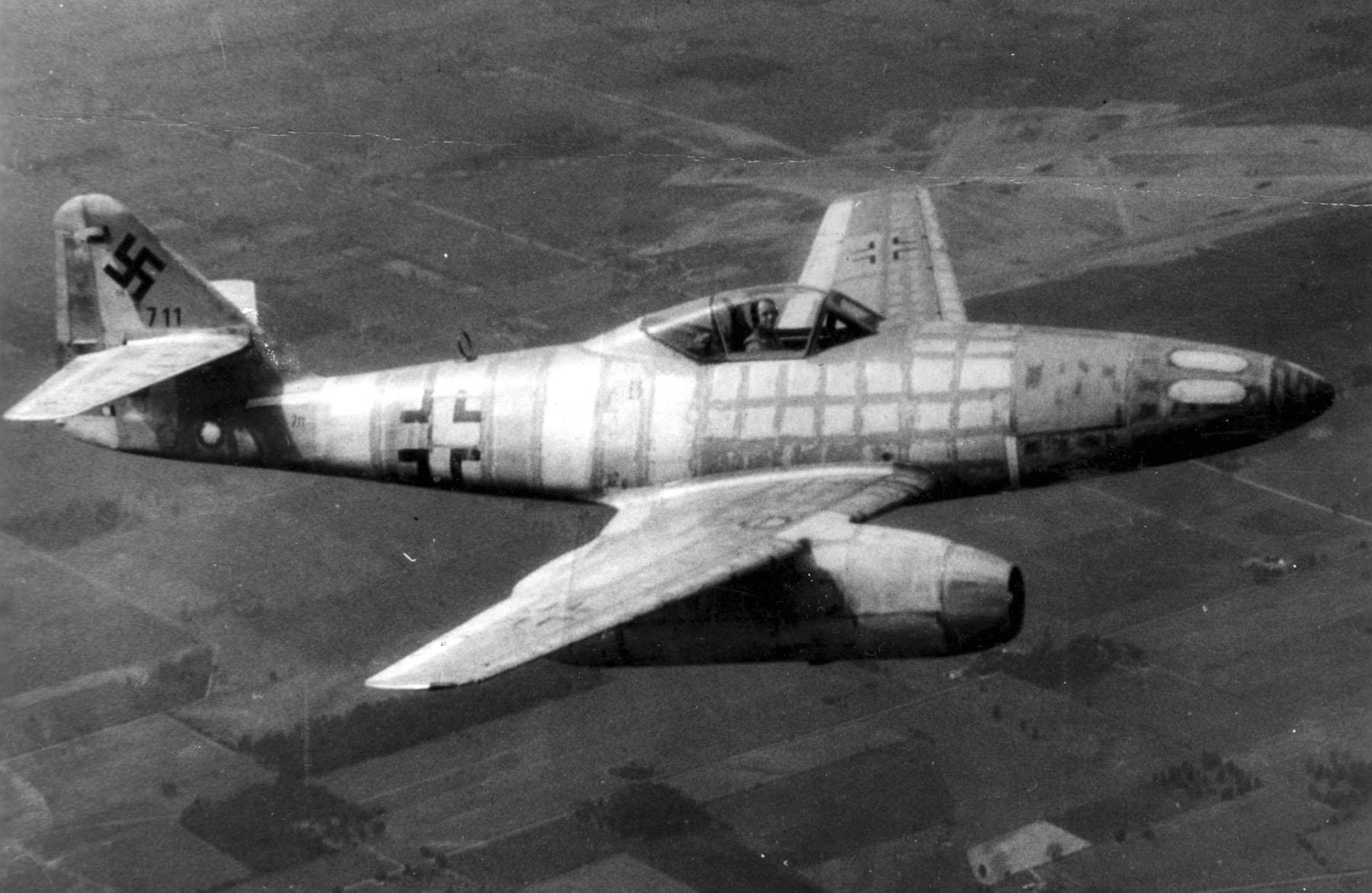 A German Me-262 with a swept wing design
A German Me-262 with a swept wing design
Now that the design issue of the aircraft was solved, the second challenge came up. The MiG OKB needed new powerful engines to drive the jet aircraft to the required performance. The quality of the German engines at the time was poor, so the eyes of the Soviets moved to the more reliable engines of Rolls Royse. It is funny to note that Germany’s jet ace Adolf Galand, a pilot who flew both the Me-262 and Gloster Meteor, said that if the Me-262 had the Rolls Royse engine it would have been a perfect fighter!
In 1946, Soviet aviation minister Mikhail Khrunichev and aircraft designer A. S. Yakovlev suggested to Premier Joseph Stalin the USSR buy advanced jet engines from the British. Stalin is said to have replied, "What fool will sell us his secrets?" However, he gave his consent to the proposal and Mikoyan, engine designer Vladimir Klimov, and others traveled to the United Kingdom to request the engines. To Stalin's amazement, the British Labour government and its pro-Soviet Minister of Trade, Sir Stafford Cripps, were perfectly willing to provide technical information and a license to manufacture the Rolls-Royce Nene. This engine was reverse-engineered and produced as the Klimov RD-45, subsequently incorporated into the MiG-15.
Finally, when all of MiG’s problems were solved, the prototype of the MiG-15 (called I-310) emerged. The I-310 was a clean, swept-wing fighter with 35° sweep in wings and tail, and exceptional performance, with a top speed of over 1,040 km/h (650 mph). The design used a single engine fed by a split-forward air intake. A duct carried intake air around the cockpit area and back together ahead of the engine. First fight was 30 December 1947 (The similar American F-86 Sabre had first flown only months earlier in October 1947). The first production example flew on 31 December 1948. It entered Soviet Air Force service in 1949, and subsequently received the NATO reporting name "Fagot."
An improved variant, the MiG-15bis ("second"), entered service in early 1950 with a Klimov VK-1 engine, an improved version of the RD-45/Nene, plus minor improvements and upgrades. Visible differences were a headlight in the air intake separator and horizontal upper edge airbrakes. The 23 mm cannons were placed more closely together in their undercarriage. Some "bis" aircraft also adopted under-wing hardpoints for unguided rocket launchers or 50–250 kg (110–551 lb) bombs. Fighter-bomber modifications were dubbed "IB", "SD-21", and "SD-5". About 150 aircraft were upgraded to SD-21 specification during 1953–1954. An unknown number of aircraft were modified to "IB" specification in the late 1950s.
The MiG-15 was widely exported, with the People's Republic of China receiving MiG-15bis models in 1950. Chinese MiG-15s took part in the first jet-versus-jet dogfights during the Korean War. The swept-wing MiG-15 quickly proved superior to the first-generation, straight-wing jets of western air forces such as the F-80 and British Gloster Meteor, as well as piston-engined P-51 Mustangs and Vought F4U Corsairs with the MiG-15 of First Lieutenant Semyon Fiodorovich Jominich scoring the first jet-vs-jet victory in history when he bagged the F-80C of Frank Van Sickle, who died in the encounter (the USAF credits the loss to the action of the North Korean flak). Only the F-86 Sabre, with its highly trained pilots, was a match for the MiG.
Its baptism of fire occurred during the last phases of the Chinese Civil War (1946–49). During the first months of 1950, the aviation of Nationalist China attacked from Taiwan the communist position in continental China, especially Shanghai. Mao Zedong requested the military assistance of the USSR, and the 50th IAD (Истребительная Авиадивизия, ИАД; Istrebitelnaya Aviadiviziya; Fighter Aviation Division) equipped with the MiG-15bis was deployed south of the People's Republic of China. On 28 April 1950, Captain Kalinikov shot down a P-38 of the Kuomintang, scoring the first aerial victory of the MiG-15. Another followed on 11 May, when Captain Ilya Ivanovich Schinkarenko downed the B-24 Liberator of Li Chao Hua, commander of the 8th Air Group of the nationalist Air Force.
The MiG-15 is known and remembered mainly for its participation on the Korean War. The area on which most of the dogfights occurred between MiGs and Sabres was named “MiG Alley” after the MiG-15. The pro-communist Koreans received MiG-15s as an aid from China and the Soviet Union during the war. Some jets were actually piloted by Chinese and Soviet pilots to test the performance of the aircraft and train pilots. It is interesting to note that the third highest scoring jet ace in history was a Soviet pilot called Nikolai Vasilevich Sutyagin achieving 24 kills during the Korean War.
Map showing location of "MiG Alley"
The MiG-15 took part in other conflicts after the Korean War. In 1956, Egyptian pilots flew MiG-15 during the Suez Crisis and countered Piper Cub, Meteor F.8 and Dassault Ouragan. Although Egypt was very conservative at using their MiG-15s, so as not to lose their 150 trained pilots against the enormous numbers of jets employed by Britain, France and Israel, Egyptian pilots were able to score kills against the aggressor nations in most encounters.
The MiG-15 today is a must see aircraft for display in the countries that formerly operated it. I personally saw the aircraft at the Military Museum in Post Said city in Egypt (The museum mainly displays weapons that took part in the Suez Crisis). Regarding my diecast collection, I own a Hobby Master 1:72 model of the MiG-15. This model has Egyptian markings which were used during the Suez Crisis (aircraft painted silver and insignia being a crescent moon with three stars in the middle). A believe the manufacturers copied the model from an aircraft on display at Hatzerim airbase, Israel. At the end of this post, you will find photos of the model I own in addition to the one on display I saw in Port Said and the one on display in Israel.
The MiG-15 was the Soviet Union’s true entry to the jet age. It was also MiG’s OKB door to being one of the most successful fighter jet design bureaus in the Soviet Union and the whole world. It also left a mark in history by being the most widely produced jet aircraft in history. MiG jets would be the primary fighters in the Soviet Union (The Russian Federation today) and its allies until our present day.
After the MiG-15, MiG OKB continued its quest to produce aircraft that would fly higher and faster. The world was experimenting aircraft that could achieve supersonic speed. The Soviet Union could not afford to lag behind so as to be able to maintain its position as a super power and protect its vast borders from any incoming attack from the west. The story will continue in the next post.
Tags:
Replies to This Discussion
-
Permalink Reply by JEAN-FRANCOIS QUILLIEN on September 30, 2012 at 11:04am
-
Hello, Ahmed! As usual, somptuous post, both historical and modeller/collector dedications!
When will you issue a book?
Kind regards
Jeff
Recent Visitors to the site!
© 2025 Created by Matt Whisenant.
Powered by
![]()


